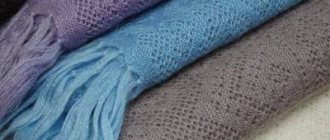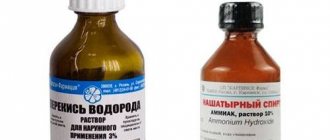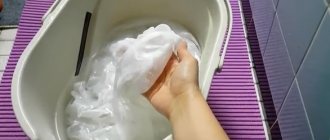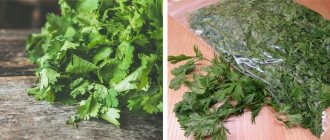Down scarves can truly be considered a national treasure and a real handmade miracle. It will both decorate and warm you in the cold winter. But a white down scarf is not eternal: its soft whiteness disappears over time. To return to its original appearance, you need to regularly care for the item and wash it properly. What are the features of washing and how to bleach a gossamer down scarf? We'll figure out.
Effective methods of whitening
Over time, scarves turn yellow due to absorbed dust and dirt. Regular washing cannot solve this problem. Then folk remedies come to the rescue. How to properly bleach a goat down scarf at home?
Hydrogen peroxide
A completely yellow canvas will lighten the usual hydrogen in the peroxide from the first aid kit.
- The substance is mixed with warm water at the rate of 20 milliliters of peroxide per 100 grams of shawl.
- The effectiveness of the solution is increased by adding a tablespoon of alcohol for every liter of water.
- The shawl needs to be soaked in this solution for 6 hours.
At the same time, a constant temperature of the liquid is maintained - a cooled mixture will not give the desired result. A heating pad will greatly simplify the task.
Hydroperite
This bleach also helps clean up handkerchiefs that have turned yellow over time. 5 hydroperite pills for every 100 grams of product are diluted in water for washing. You also need to add a teaspoon of ammonia for each liter of liquid.
Soak the scarf in the same way as in the case of hydrogen peroxide, but 2 times longer.
Aspirin
An ordinary medicine will help to cope with a local persistent stain. For this you will need:
- some warm water;
- 1-2 aspirin tablets (depending on the size of the spot).
The pills are completely dissolved in water. The solution is applied to the contaminated area for several minutes.
Do not rub the wet area. The result is visible after drying: if the procedure was successful, but the stain still remains, it is repeated until the dirt completely disappears.
Preparation for the process
Before you begin wet cleaning, the product must be prepared.
First, the scarf is shaken to remove all the particles that have not yet become embedded in the down layer. Then the item is combed with a wooden comb with sparse blunt teeth. This procedure allows you to preserve the fluffy cover of the shawl. Next, using a dry sponge, remove dust and fine dry dirt from the canvas.
You should comb a fine knit item very carefully so as not to snag or break the thread.
If there are stains on the web, they are bleached before general washing. The method of removal depends on the type of pollutant.
To remove colored marks, use an aqueous solution of high concentration aspirin. Of the ready-made chemical preparations, oxygen stain remover intended for children's things is suitable.
Goat down is a capricious and delicate material; it should be handled with the utmost care. Therefore, you will have to sequentially perform three stages: prepare, wash and dry a white weightless shawl. If you follow the recommendations correctly and scrupulously, the scarf will not fall off and will retain its color, size and shape.
Before any washing or cleaning, you should carefully comb the down product, preferably with a massage brush, without touching the knitted base.
Preparation begins with threading a strong thread or fishing line through all the teeth of the scarf sequentially, without missing a single one (the length of the thread should be 40 cm greater than the perimeter of the scarf), after which a knot is tied. A weightless shawl gathered in such a bun will no longer lose its shape.
Traditionally, after washing, the webs are pulled onto a frame, which has the size of the product plus one centimeter for tension. Carnations or push pins are secured according to the number of teeth on the edge of the shawl. Make sure that the metal is stainless steel so that the white scarf is not damaged by rust. If there is no place to take the frame, then prepare a place on a flat surface for drying away from heating devices.
Washing features
Minor natural stains can be easily removed by regular washing using delicate detergents. Its technology is slightly different from the classic one:
- The protruding fibers of the scarf should be carefully combed with a soft brush. This will help avoid tangling, matting and lumps.
- It is better to gather the edges of the product onto a thread equal to the perimeter of the scarf, and tighten it, bringing the corners together. The area of the item will be reduced and it will be easier to wash.
- The water temperature for washing should not exceed 30–40 degrees Celsius. The fiber may shrink due to higher temperatures.
- You should not put too much pressure on the shawl in the water; it is better to rotate it smoothly, lightly rubbing the stained areas. To bleach cobwebs with a large area of darkening, you need to leave them to soak for several minutes.
- After the main cycle, the accessory should be rinsed in clean water, slightly diluted with vinegar.
- It is recommended to wring out the item; the down scarf is lightly squeezed in the palms. To dry the scarf, place it on a flat surface, having previously laid a thick absorbent fabric under and on top of it. Excess moisture is removed by gradual pressure on different places of the scarf under the fabric.
The product is dried horizontally or stretched in a special frame suitable in size. Direct exposure to sunlight and proximity to heating devices are contraindicated.
Safety regulations
Remember that goat fluff by its nature simply cannot be snow-white. It is usually slightly milky with a slight yellow tint. Some fashionistas wear natural colors, others prefer to bleach the item. However, any product can damage the quality of the down. Therefore, before using a method unfamiliar to you, it is better to test its effect on a small piece of fluff. It is ideal if you have some thread left after knitting the product.
Proceed carefully, follow all the rules for washing and drying a down scarf, and then it will keep you warm for a long time, emphasizing your beauty.
Product care rules
Good news for all housewives - this down product, unlike angora, can be washed in water. By following simple rules, you can bleach a cobweb scarf without the risk of losing it.
- Handwash . The Orenburg scarf is made of the finest down fiber - any mechanical impact in the drum of a washing machine can stretch, deform and tear it. It is correct to wash the Orenburg scarf only by hand.
- Delicate spin . You cannot squeeze or twist the web shawl.
- Soft care products . Conventional washing powders and laundry soaps contain too much alkali, which damages the finest fibers. Instead, it is better to use delicate detergents or children's household chemicals.
A scarf should be washed only when absolutely necessary or heavily soiled, as frequent friction of the fibers has a detrimental effect on its appearance. It is not recommended to iron it: if creases or wrinkles appear, the shawl should be carefully hung on a chair or clothesline.
To wash a white cobweb scarf, all you need are the available products from a housewife’s arsenal. If you strictly follow the recommendations, a bleached down product without a single spot will delight its owner for a long time.
Storing a down scarf
Now let's dwell on the issue of storing down products. This is best done by rolling a scarf or other product into a loose roll and placing it in a natural woven bag. It should be kept in a well-ventilated place in the absence of foreign odors. Do not crumple the down product or press it down on top with other things. In summer, in sunny weather, it is recommended to take the scarf outside and shake it slightly - this will refresh and ventilate it.
It is also necessary to protect down products from moths - store-bought products or natural herbs that repel pests will help you with this: mint, wormwood, wild rosemary, lavender and citrus peels (they should be stored in open bags that need to be shaken from time to time).
Special cases
Use washing only in cases where it cannot be avoided. When the scarf is only slightly dirty or dusty, resort to cleaning.
Cleaning a scarf with snow
Clean the scarf on freshly fallen snow, lightly running it in different directions along the surface of the snow crust. Repeat the procedure for the reverse side of the scarf. Then lightly shake it off to remove any snow remaining on the shawl.
If there are stains of dried dirt on the scarf, you should not wash it. Remove it with gentle movements with a dry washcloth.
Baking soda
This method can rather be called preventive. It is effective if applied before yellowing appears on white wool clothing.
Before each wash, it is necessary to soak the white sweater in warm water with the addition of soda. The best ratio is 2 tbsp. soda per liter. The exposure time is 20-30 minutes.
An important rule: you do not need to add a soapy cleaning agent, such as washing powder, to the solution.
Such household chemicals reduce the effectiveness of soda. Therefore, if you want to wash the yarn in balm, you can do this after the preventive procedure.
Before bleaching wool socks and sweaters, read the label information. It is possible that some substances should not be used on clothing. In addition, care instructions are indicated on the tag.
How to fluff after drying?
To restore the pomp and volume of a woolen scarf, it needs to be fluffed. This is done after rinsing and lightly spinning.
The shawl is placed in a plastic bag and placed in the freezer for 5-6 hours. Periodically (about once an hour) the packaging is taken out of the freezer and shaken so that the product freezes evenly.
After freezing, the scarf is allowed to completely thaw and then dried using a frame. Next, the fluff is carefully lifted with a comb or a massage comb with blunt teeth. This is done only after the fabric has completely dried; a wet shawl cannot be combed.
Another way to fluff is to hang a dry shawl in the wind. It is also necessary to take into account the fact that when worn, the scarf will naturally become fuller. This is why knitters recommend wearing a knitted puffball as often as possible.
If you have purchased or made your own hoops in the form of a frame, then stretch the scarf lightly wrung out in a towel over them. The cloves should be touched with thread or fishing line, but not with the cloves themselves. You will get a uniformly stretched scarf, which will not get dirty with rust. First, pull the item in the corners, then along the sides, without missing a single tooth. This work is the most painstaking, but necessary to preserve the external attractiveness of the web.
If there is no frame, then the shawl is laid out on a horizontal surface, straightening out all the bends and irregularities. It is better to choose white fabric for the bedding to avoid accidental coloring. The outline of the scarf is outlined on the fabric, and a fishing line threaded through the teeth is connected with pins. Try to place the scarf with slight tension, but evenly on all sides. Start fastening from the corners, as when pulling on a frame.
The web dries for 10 hours.
You should not comb the scarf when wet; the fluff becomes more elastic and easily comes out of the loops of the base.
After drying, remove the scarf from the fastenings and carefully remove the fishing line from the teeth. You can slightly lift the fur with a brush, giving it airiness and direction.
Specialized bleaches
Specialized bleaches for wool and silk (Perox, Vanish, etc.) are sold in hardware stores; their dosage and exposure time are indicated on the packaging. The effect of such products is based on the release of oxygen molecules, which remove contaminants from animal fibers without damage.











